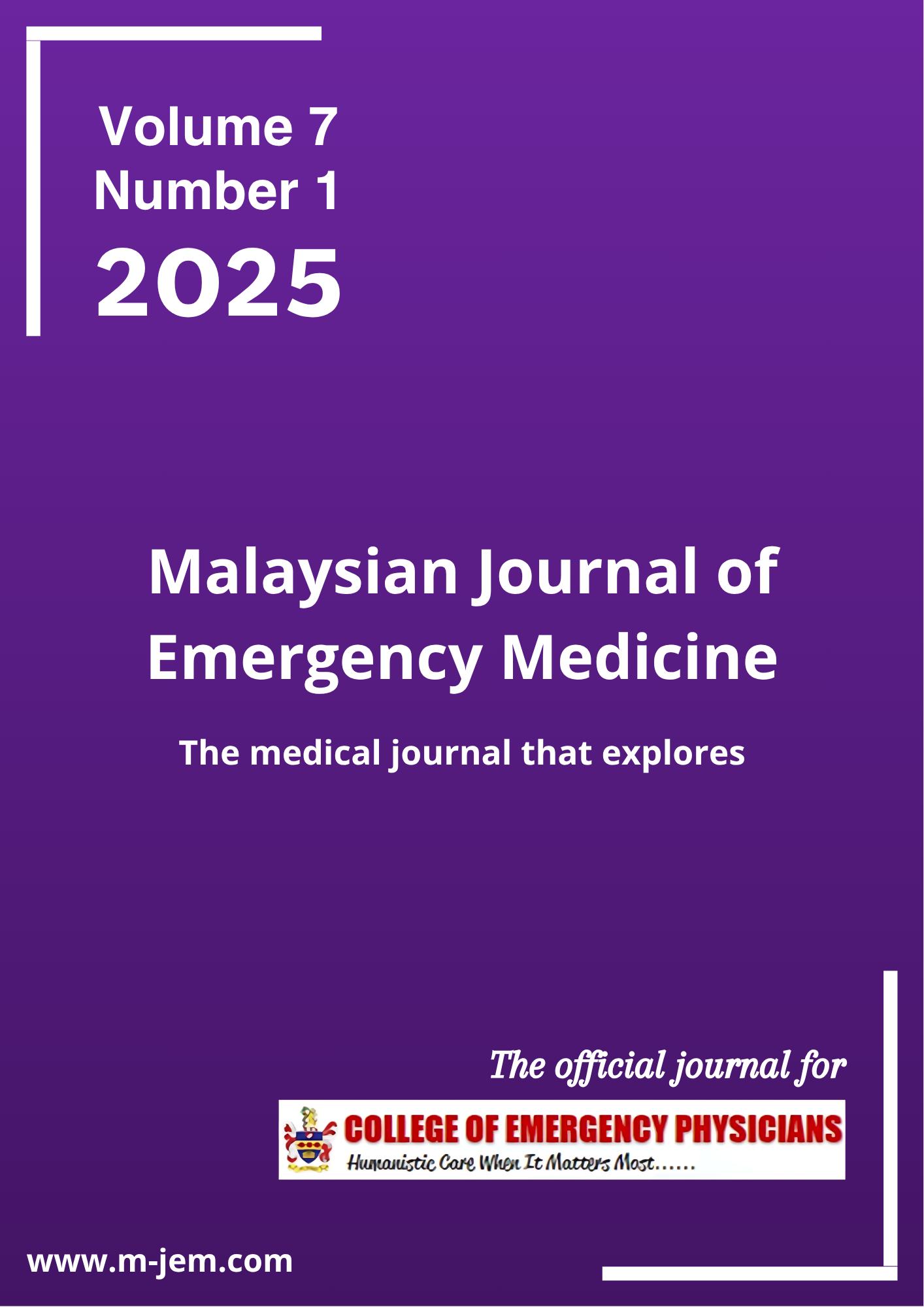Injury Patterns and Frequencies Among Athletes at Ironman Langkawi 2024: Implications for Event Medical Preparedness
Main Article Content
Abstract
Introduction: Ironman Langkawi presents unique challenges due to high temperatures, humidity, and uneven terrain. These environmental stressors, combined with the intense physical demands of a 3.8-kilometer swim, 180-kilometer bike ride, and 42.2-kilometer run, lead to various injury risks. The event's stages correlate with specific injuries: swimming often results in exhaustion or water-related emergencies, cycling poses risks of abrasions and fractures, and running leads to musculoskeletal injuries and heat-related conditions. Understanding these patterns informs medical preparedness.
Methodology: A retrospective observational analysis was used, with data gathered from Aid Station Medical Forms and Medic Base Treatment Forms, which recorded injuries and treatments at each event stage. Injury data were categorized for clarity, focusing on musculoskeletal injuries, trauma/skin injuries, heat-related illnesses, and other medical issues. This allowed a comprehensive view of the most common injuries and informed medical response needs. Ethical protocols ensured confidentiality, and standardized terminology improved data integrity.
Results: A total of 1,760 athletes participated, with 1,273 competing in the full Ironman and 487 in the Ironman 70.3. A medical team of 110, including emergency physicians and paramedics, was strategically deployed. High humidity and tropical heat increased the likelihood of dehydration and heat-related issues. Out of 1,057 (60.1%) treated at aid stations, musculoskeletal injuries (e.g., cramps) were the most common, 986 (93%) cases. Trauma-related injuries, primarily during cycling, accounted for 22 cases. Medic bases recorded 118 (6.7%) cases, with 46 (39%) heat-related illnesses and 48 (41%) musculoskeletal injuries cases; 14 (11.9%) cases were referred to Hospital Langkawi for advanced care.
Discussion: Findings underscore the impact of Langkawi’s climate on injury patterns. Musculoskeletal injuries, notably cramps, were prevalent in the running stage, linked to prolonged exertion and heat. Musculoskeletal injuries such as fractures, abrasion and trauma injuries during cycling highlight risks in high-speed, uneven terrains. Comparisons with other endurance events affirm these trends. Improved hydration access and trauma-trained staff in cycling zones are recommended. Limitations include demographic data inconsistency and potential underreporting. Future research should standardize data collection, examine demographic injury correlations, and monitor long-term outcomes.
Conclusion: Ironman Langkawi exemplifies the complex demands of tropical endurance events. The dominance of musculoskeletal injuries such as cramps in the running stage and fractures, abrasion and laceration wound during cycling aligns with patterns observed in similar events. Effective on-site treatment limited hospital referrals, validating the medical strategy. Enhanced hydration, safety measures for cyclists, and data standardization are recommended to improve medical readiness and injury prevention in future events.
Metrics
Article Details

This work is licensed under a Creative Commons Attribution-NonCommercial 4.0 International License.

